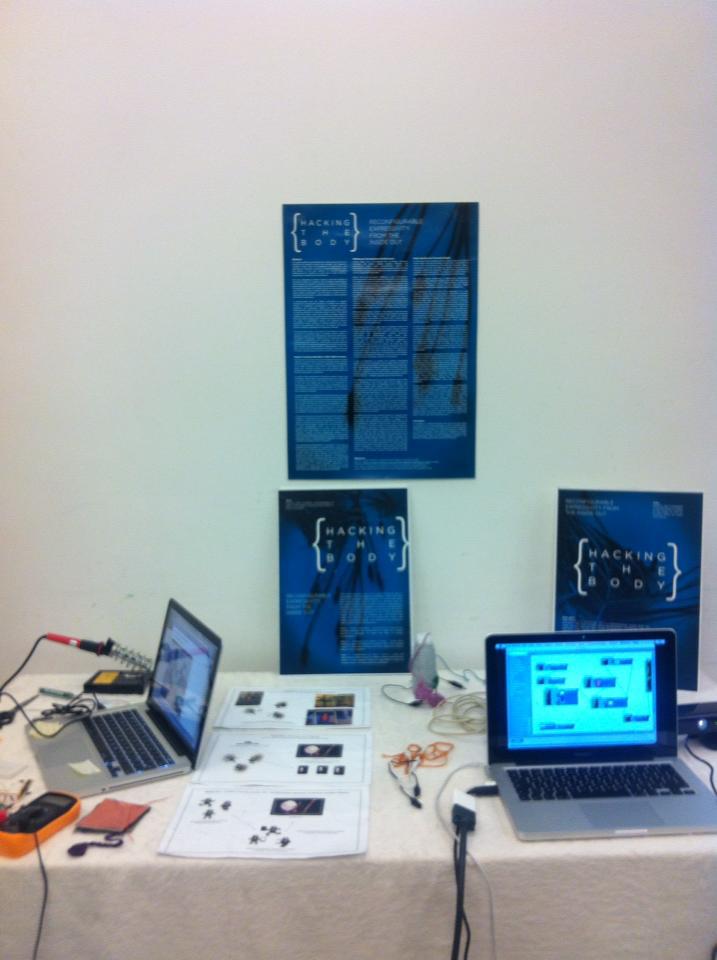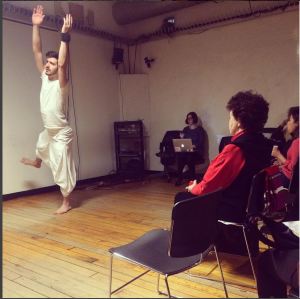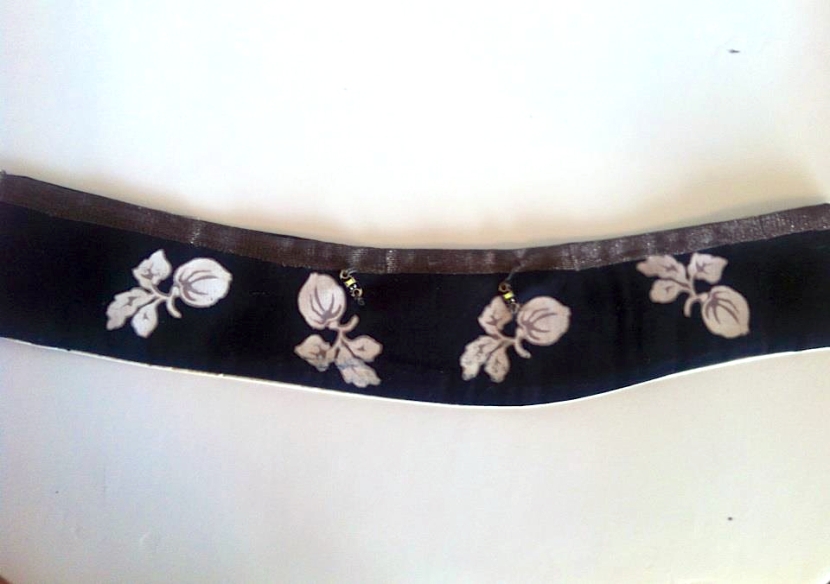Category: Uncategorized
SUPPORT OUR INDIE GOGO CAMPAIGN
We are raising funds for our next project – an expanded version of Feel Me (called Feel Me More) coming to New York in September. Please buy tickets and share our work here!
Hacking the Body: Feel Me More campaign from Camille Baker on Vimeo.
Performance at Refest2.0 at NYU ITP
In March we performed a networked NYC to London version of Feel Me for Refest2.0. Our two dancers (Aiden Fieldman and Phoebe Brown) performed one in NYC at the event, and one in London at New Malden Studios. Through the custom OSC app we made for the OmSignal shirts, their breath rates were networked transatlantically to effect each other’s choreography.
Flutter/Stutter & Feel Me Creation Process 1
Our team has arrived in Sheffield and we are continuing our work towards our performances next week.
We continued working on the Flutter/Stutter garments with Tara Mooney and Becky Stewart. What is amazing about these costumes is that the capacitance sensors are completely unassuming in their appearance. They are conductive threads sewn into pleats and conductive fabric braiding into other fabrics on the the costume. This technology does not look like technology. Some other amazing details designed by Becky Steward include conductive fabric laser cut into the circuit. It’s beautiful and genius.
Our first day with these costumes was slow moving due to multiple parts coming together, some electronics not being delivered yet and a lot of fitting parts to the dancers. However, we have garments sewn and now we will add the interactions when all the parts arrive.
Our second piece, Feel Me is using a hacked version of the OmSignal shirt and an app created by Peter Todd to control electronics by Camille. Essentially one dancer’s breath is felt live on the other dancer through vibe board motors. While we started well with this technology, we also reached a bit of a hiccup on our first real rehearsal day with the app communicating with the shirts. However, the choreography was started and there is a movement phrase to start with.
The movement itself is quite a simple and short phrase. However, it is then retrograded and then performed to all sides of the room (the final pieces are to be performed in the round). This is then further complicated with the instruction of starting and stopping with the breath of the other dancer. So something quite short and sweet becomes a complex and thorough composition.
New Residency, New Collaborators, New Funding
We have started work again on creating the performance of HTB2.0. We have been fortunate enough to receive support and funding for this next leg of our project and have brought on new collaborators who we are working with over this next weekend.
We are continued to be supported by University of Creative Arts Epsom who hosted our last residency. We have new received funding from the Arts Council of England and further support from Access Space in Sheffield to produce our new performance.
And because of our new funding, we have been able to bring on new collaborators to our project. Here are some bios pulled from the internet:
Becky Stewart is an engineer and developer working with physical computing. Before completing her PhD in acoustics, spatial audio and interfaces for music search with the Centre for Digital Music at Queen Mary, University of London, she completed an MSc in music technology at the University of York and a BMus in music engineering technology and computer science at the University of Miami. She works on creative technology projects for clients through Anti-Alias Labs and her personal blog documents her projects. She recently published Adventures in Arduino, a book teaching electronics and coding for ages 11-15.
Tara Baoth Mooney has trained and worked as a designer in the textile industry in New York the UK, Ireland and China. Tara has recently become an associate research fellow on the SMARTfashion team at SMARTlab based in UCD where she is investigating the idea of sustainability and its transcendence through many different forms- including the boundaries of human experience, communication, and interaction in regard to personal and immediate environments. In her work, she returns constantly to the theme of garments as cladding and what that means to man on a daily basis. The potential for external cladding, to act as an interface between man and the immediate environment, promotes reflection, emotional durability and communication. Through our clothing we forge personal systems of identity that we construct with deliberation and care.
Peter Todd studied Sonic Art at Middlesex and has a continuing interest in the design of novel tools for design, composition and performance of experimental music, sound art and data sonification. While much of his recent work has been purely visual, he has also created the audio element of Latham’s contemporary work – the audio processes used being partly based on another iteration of the Feedback Variations. Peter is most – although not exclusively – interested in creating interactive artefacts that are meant to stand as works of art in their own right rather than composed pieces of music or rendered video.
Interview
Back in June we were interviewed while in Australia. Here’s a link to the article by Melanie Sano:
Pinterest Board
recent dabbling
V&A November 27th


Small bracelet made by Camille with a Seeduino microcontroller (now to get it to work)
More Links and Resources (Camille’s)
Wearables and Electronics Resources April-Nov 2012
Materials/ Sensors to buy or make
- Bare conductive Ink (and tutorials) http://bareconductive.com/tutorials
- NeuroSky – EEG sensor – http://store-eu.neurosky.com/products/mindwave-1
- Conductive shopping list and cool wearable projects – How to Get What You Want –http://www.kobakant.at/DIY/?page_id=2156
- open Materials http://openmaterials.org/2011/03/27/materials-101-electrotextiles/#special
- Flexible Stretch sensors http://www.imagesco.com/sensors/stretch-sensor.html
- Plug and Wear http://www.plugandwear.com/default.asp?mod=cat&cat_id=86
Soft Circuits /Wearables resources
- soft and hard sensor projects and resources http://www.mediamatic.net/12648/en/wearable-arduino
- Plusea soft electronics http://www.plusea.at/?p=938
- Awesome “kit-of-no parts” electronics you make http://web.media.mit.edu/~plusea/?category_name=actuators
- Soft Circuits Saturdays Wearable projects and resourceshttp://softcircuitsaturdays.com/projects/
- Felted Signal Processing http://fsp.fm/
- Kit-of-no-parts- http://web.media.mit.edu/~plusea/?category_name=actuators




